Dendrobium chrysotoxum - Orchid256
Dendrobium chrysotoxum - Orchid256
In the wild, this pretty orchid is found in Southeast Asia. Dendrobium chrysotoxum has bright yellow flowers which grow from the plant in large numbers. The lip is red with frills. It can vary extremely in colour, from light yellow to brown. The plant has a thickened stem from which multiple leaves and flower stems grow. This makes Dendrobium chrysotoxum a true colour explosion.
Currently not in stock
€ 0,00
Keep me up to date?
Araflora will inform you as soon as the product is available again. Please fill in your e-mail address and we will let you know as soon as the product is back in stock. You will get an e-mail message when the product is available again. Unfortunately we cannot say how long this will be or what the price is likely to be.

Receive an e-mail when new stock of this plant arrives.
Share this plant? Press on one of the following icons.
The natural habitat of Dendrobium chrysotoxum is Northern India, Thailand, Myanmar, China, Laos, Vietnam, Bangladesh, Bhutan and Nepal. This beautiful orchid grows at altitudes from 400 to 1.600 meters. The orchid produces multiple leaves on its thickened stem. The leaves are quite long and have a pointy end. The flower stems are around 30 centimetre and can carry dozens of flowers each. The flowers of Dendrobium chrysotoxum have a honey yellow colour with a yellow or brown lip. The lip is round and has frills. Its colour betrays its sweet honey scent


Dendrobium chrysotoxum likes light, but should be kept out of direct sunlight. During winter this orchid should get slightly more light. The temperature should be around 20⁰C with slightly colder nights around 13⁰C. Make sure the temperature doesn't drop below 10⁰C or rise above 25⁰C. The preferred humidity is around 70%. Raising the humidity slightly at night stimulates the production of flowers. Water daily during spring and summer with rainwater or distilled water. Water less during autumn and even less during winter. This should be two times a week. Water should be able to drain from the substrate. Combined with a proper airflow you can prevent infections and disease. Orchid-mix is a suitable substrate, but it is also possible to attach the plant to a piece of bark. You can find this and other components in our ‘Plant Accessories’ section. Fertilize with caution. Old flowers can be cut from the plant.





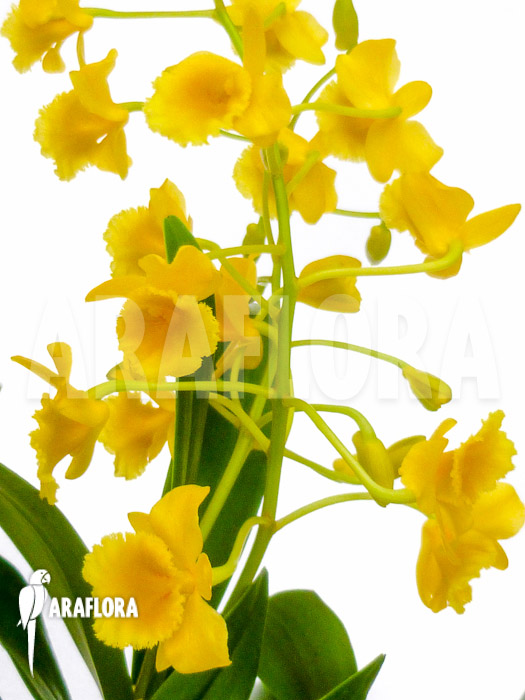
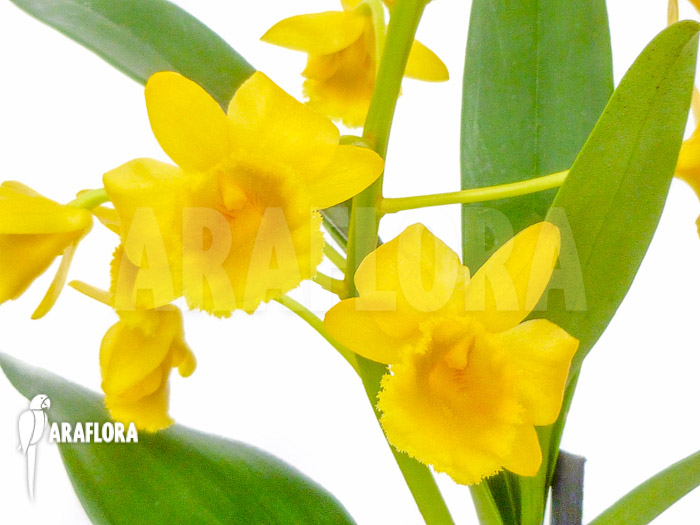
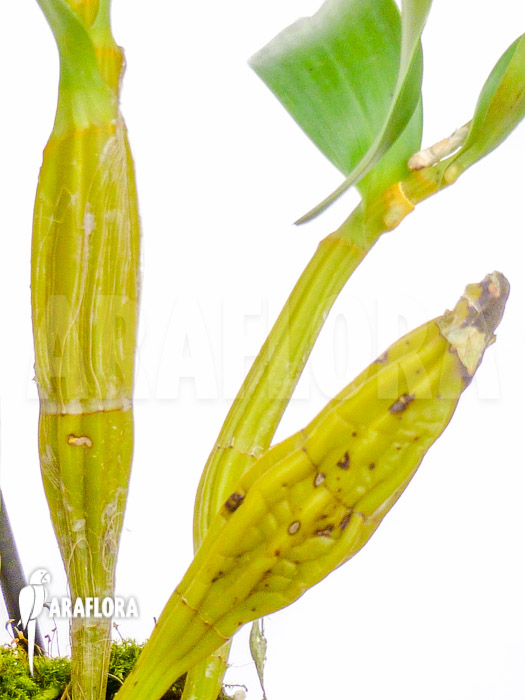
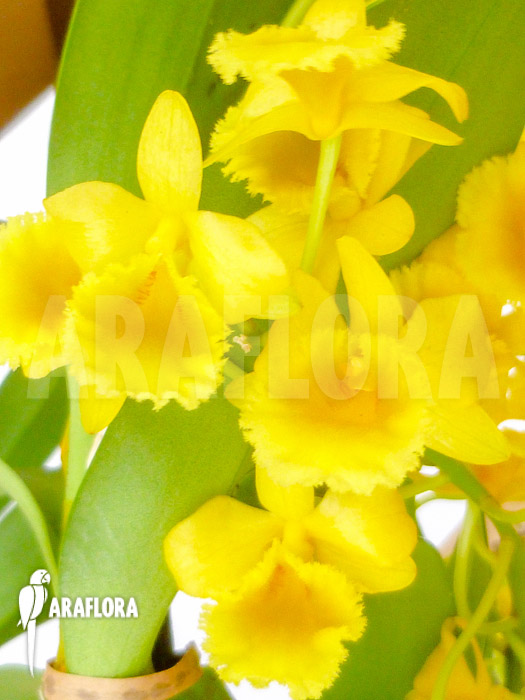
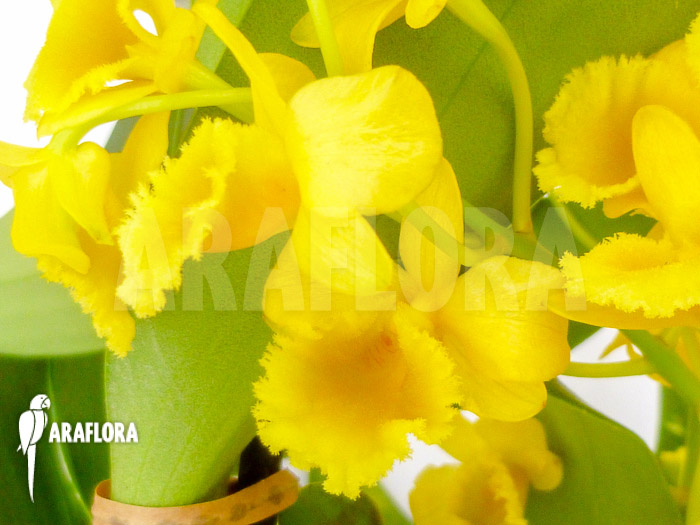
 10 cm
10 cm
 15 cm
15 cm












